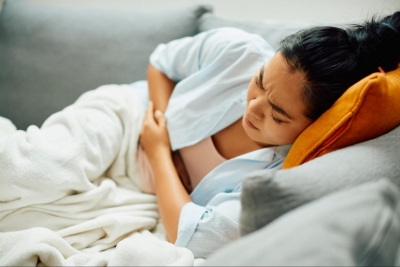Menstrual cramps are a well-known part of many women’s monthly cycles, but what happens when the bleeding ends and the cramps persist? Post-period cramps can be confusing and uncomfortable, and understanding their causes and how to address them is crucial for managing your health and well-being. In this post, we’ll explore post-period cramps, their common causes, and how you can find relief.
What Are Post-Period Cramps?
Post-period cramps are defined as abdominal or pelvic pain that occurs after your menstrual period has ended. Unlike typical menstrual cramps, which are usually felt during the period itself, post-period cramps can happen as the bleeding stops or shortly after. These cramps might feel dull and aching or, in some cases, sharp and intermittent. Understanding the nature of these cramps can help identify their underlying cause.
Common Causes of Post-Period Cramps
1. Hormonal Changes
During your menstrual cycle, hormone levels fluctuate significantly. These hormonal shifts can sometimes cause cramps even after menstruation ends. The primary hormones involved are progesterone and estrogen. When progesterone levels drop at the end of your period, it can lead to continued uterine contractions or discomfort.
2. Uterine Contractions
The uterus continues to contract after menstruation as it returns to its normal state. For some women, these contractions can cause discomfort or cramping that lingers beyond the menstrual period. While this is generally normal, severe or prolonged pain should be evaluated.
3. Endometriosis
Endometriosis is a condition where tissue similar to the lining of the uterus grows outside of it. This can lead to chronic pain and cramps that may persist even after menstruation. Other symptoms include heavy periods, pain during intercourse, and infertility. If you suspect endometriosis, it’s important to consult with a healthcare provider for proper diagnosis and management.
4. Pelvic Inflammatory Disease (PID)
PID is an infection of the reproductive organs, often caused by sexually transmitted infections. It can lead to inflammation and pain in the pelvic area, including post-period cramps. Additional symptoms may include unusual discharge, fever, and pain during intercourse. Early diagnosis and treatment are crucial to prevent complications.
5. Fibroids and Polyps
Uterine fibroids and polyps are non-cancerous growths in the uterus that can cause post-period cramps. Fibroids are more common and can vary in size, while polyps are usually smaller. Both can lead to discomfort or pain after menstruation. If you experience persistent pain, a gynecological exam and imaging studies may be needed to assess these conditions.
6. Ovarian Cysts
Ovarian cysts are fluid-filled sacs that develop on the ovaries. While many cysts are harmless and resolve on their own, they can sometimes cause discomfort or pain that persists beyond menstruation. Symptoms might include pelvic pain, bloating, and irregular menstrual cycles. Monitoring and treatment options are available if cysts are causing significant symptoms.
7. Other Factors
Several other factors can contribute to post-period cramps, including stress and lifestyle habits. Stress can exacerbate menstrual and post-period symptoms, while diet and exercise play a role in overall reproductive health. Maintaining a balanced lifestyle can help alleviate some of these discomforts.
Diagnosis and Evaluation
If you experience post-period cramps, it’s essential to determine whether they’re part of a broader issue. Here’s when you should consider seeking medical advice:
- Persistent or severe pain that affects your daily activities.
- Symptoms that accompany cramping, such as fever, unusual discharge, or pain during intercourse.
- Symptoms that are new or have changed significantly.
Your healthcare provider may recommend diagnostic tests to identify the cause of your symptoms. Common tests include pelvic exams, ultrasounds, and, in some cases, laparoscopy. These evaluations can help pinpoint conditions like endometriosis, PID, or fibroids.
Treatment and Management
1. Lifestyle Modifications
Adjusting your diet, exercise routine, and stress management can significantly impact your symptoms. Incorporating regular physical activity, maintaining a healthy diet, and practicing stress-relief techniques such as yoga or meditation can help manage post-period cramps.
2. Medications
Over-the-counter pain relievers such as ibuprofen or acetaminophen can be effective for managing mild to moderate cramps. For more severe cases, prescription medications may be necessary. Hormonal treatments, such as birth control pills, can help regulate hormone levels and reduce cramps associated with hormonal imbalances.
3. Alternative Therapies
Alternative therapies, such as acupuncture and herbal supplements, may offer relief for some individuals. However, it’s essential to consult your healthcare provider before starting any new treatment to ensure it’s safe and appropriate for your condition.
4. Medical Interventions
For conditions like endometriosis or fibroids, medical interventions might be required. Hormonal treatments can help manage symptoms, while surgical options may be necessary for severe cases. Discussing your symptoms and treatment options with your healthcare provider can help determine the best approach.
Preventive Measures
Preventing post-period cramps involves a combination of lifestyle choices and regular medical check-ups. Maintaining a healthy diet, exercising regularly, and managing stress can help reduce the likelihood of experiencing severe cramps. Regular gynecological visits can also help catch and address any underlying issues early.
Post-period cramps can be uncomfortable and concerning, but understanding their causes and treatment options can help you manage them effectively. If you experience persistent or severe cramps, don’t hesitate to seek medical advice. By staying informed and proactive, you can ensure your reproductive health remains a priority and find relief from post-period discomfort.


